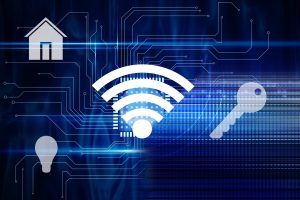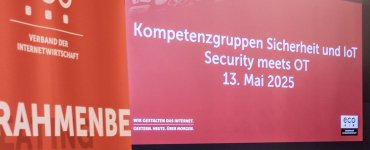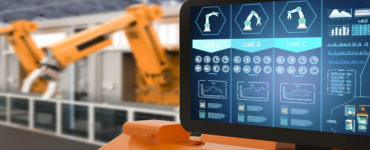SmartHome is an integrated topical field in the multi-layered IoT world and is regarded as an important building block in the topic areas of Smart Neighbourhoods and Smart Cities. But how are devices and components of the SmartHome world technically linked to the Internet? What applications can be generated and what are the benefits? What new services will this enable? What new business models can manufacturers and service providers of all kinds open up with the combination of IoT and SmartHome?
The 26th SmartHomeNRW expert panel, in cooperation with the eco Association, sought to answer these and other questions. In addition, further exciting insights into the subject area were provided.
Technically, IoT ecosystems consist of the following segments:
- Internet/Cloud
- User interfaces for application control
- local components (e.g. sensors and data carriers) with local networking and Internet connection via gateways, data storage and analysis software
What is interesting to note is that IoT systems comprise of 22% hardware, 31% software and 47% services. Simplicity, interoperability, reliability and security stand out as the most important features.
According to Statista, the number of connected households in Germany is expected to increase from five million in 2020 to over 20 million in 2025.
IoT solutions for SmartHome
Timo Josten from grandcentrix presented methods for integrating components and functions into IoT systems such as SmartHome in his overview presentation. In extensive installations, heterogeneity, isolation, and different communication protocols often complicate the interaction. There are interoperability and island concepts on the market at the protocol level, for example:
- ZigBee
- Z-Wave
- WiFi
- BlueTooth5
- Thread
- KNX
and at the system level e.g.:
- Apple-HomeKit
- GoogleHome
- Amazon-Alexa
- HomeMatic
- Bosch
- Quivicon/Deutsche Telekom
There was a special focus on the interoperability concept of the MATTER Alliance (formerly CHIP, Connected Home over IP), which is led by the CSA, Connectivity Standards Alliance (formerly ZigBee Alliance). Various global players such as Amazon, Apple, Google, and Huawei are members of this MATTER Alliance.
MATTER Standard
MATTER is seeking to revolutionize the SmartHome. A uniform standard should finally eliminate all compatibility problems and ensure secure and smooth connections. MATTER is thus intended to create a common basis of SmartHome products. This means that one and the same device works in different systems – as long as they comply with the new connection standard. A MATTER function called “Multi Admin” even provides for simultaneous operation in several SmartHome systems.
MATTER defines further framework conditions in addition to the pure communication between devices. In this way, the devices at home communicate via local network connections. The control commands of MATTER do not have to run over the Internet. However, device manufacturers can still have their own cloud service. The manufacturer’s app is then responsible for this.
The first products should be available in mid-2022.
IoT@SmartHome: Independent and self-determined living in old age
The second part of the expert panel focused on concrete use cases and new business potential. Dr. Bettina Horster, Board Member of VIVAI Software AG and Head of the IoT Competence Group of eco Association, first outlined the development of the Internet-based on customer benefits:
- Web 1.0 (1996): the customer consumes
- Web 2.0 (2005): the customer becomes part of the value chain
- Web 4.0 (2015): the customer benefits from smartification
- Web 5.0 (2016): the customer benefits from digital assistance
Especially in the area of “assisted living” and in-patient care, digital assistance can leverage enormous potential and open up new opportunities. The focus is clearly on IoT-based systems, including SmartHome components and systems.
The demographic transformation means that society is getting older and can only benefit from such assistance systems. Among other things, they offer advantages such as
- Safety for older people
- Reminder functions
- Entertainment and fun
- Status information for the relatives, the care service and the doctor
New user benefits and new business potential through IoT in the SmartHome
The end customer must be considered from the very beginning, particularly in the SmartHome field. Their needs are fundamental for the development of solutions, especially if they are more complex. However, the greater technical complexity can be significantly reduced by solution-oriented IoT platforms for applications. Examples of trends driven by IoT platforms in the SmartHome space include health and home care in applications. When it comes to technology, machine learning is what comes into play. Providers of services have a much higher level of customer attention here than providers of technical components.
Raphael Tkacz from the company Jung sees IoT as a driver of the trend, “My brave new world”. What is required in the future is a holistic offering with basic infrastructure and connection to the IoT service world. In the process, application solutions must be more strongly addressed, and energy efficiency and sustainability should also be considered. This is a topic that will be a long-term focus of the industry and is also increasingly becoming a focus for consumers in their search for suitable Smart Home solutions.




